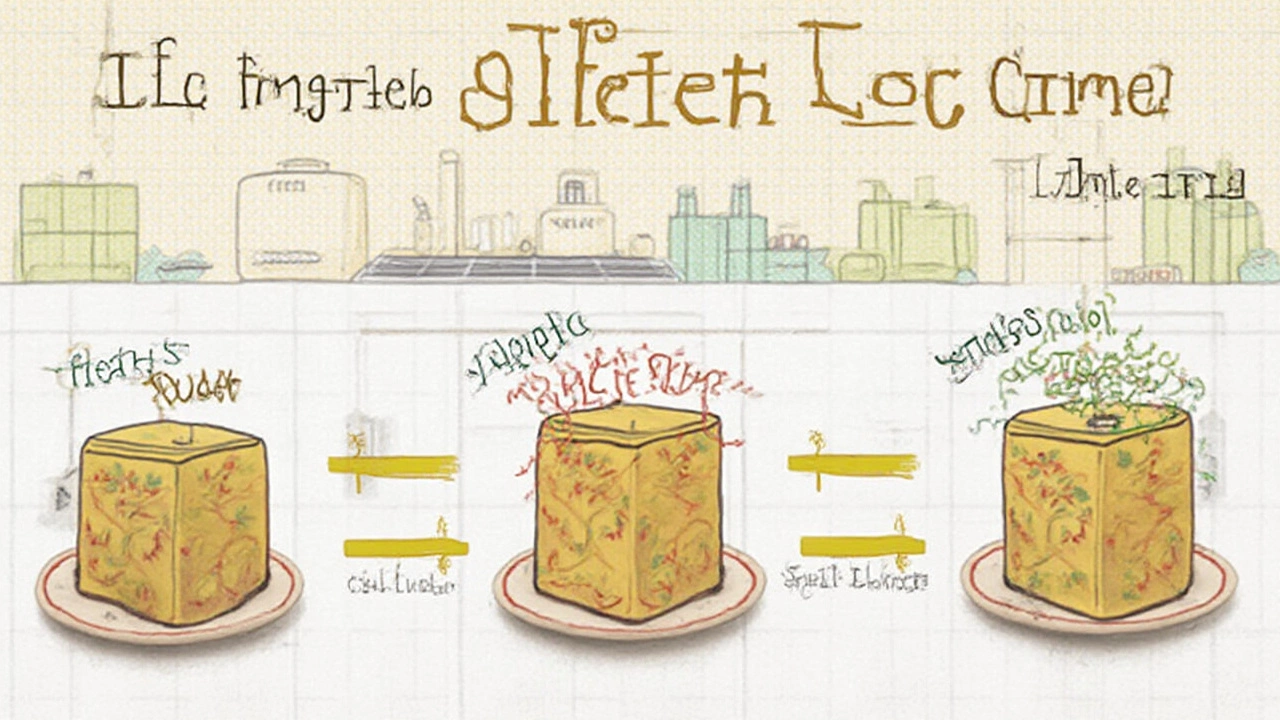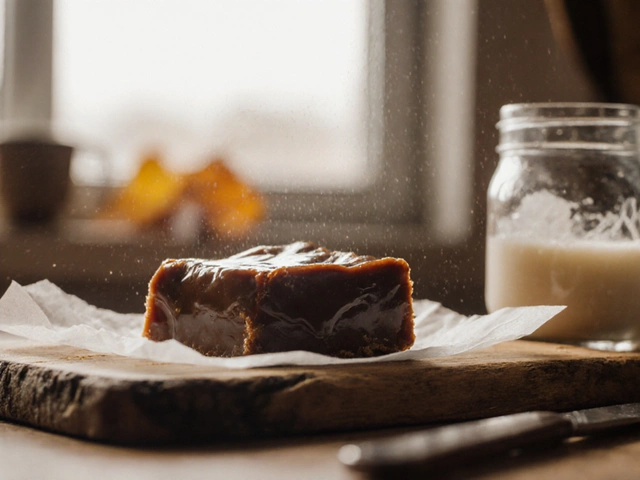
If you’ve ever found a half-eaten box of holiday fudge buried in your pantry months after the festivities, you know the silent panic: Is this still good... or one wrong bite away from a dental emergency? Fudge seems eternal with its dense, sugary magic, but trust me, even the richest chocolate treat can turn bad. And sometimes, stale fudge doesn’t exactly wave a red flag—it whispers hints, quietly telling you something’s off. If you’ve ever wondered how to tell if fudge is bad, here’s your all-in-one guide to spotting, sniffing, and second-guessing before you dig in.
How Fudge Ages: The Science and Signs of Spoilage
Fudge isn’t immortal, but boy, does it try. Its high sugar content makes it tricky for bacteria to party, but that doesn’t mean fudge ignores the laws of decay. For starters, fudge draws in moisture (or loses it) depending on where you stash it. Homemade batches, especially those loaded with butter, cream, or dairy, are more trouble-prone than the commercial stuff—preservatives give store-bought fudge a longer lease on life. But even then, time ticks away.
Here are eight real-world signs your fudge is past its prime:
- Texture changes: Is it weirdly dry, crumbly, or rock-hard? Or maybe it’s sticky and gooey in an unappetizing way? A fresh fudge should slice smooth and hold its shape. Rock-hard edges or a gluey mess are not a good sign.
- Off smell: If your fudge smells musty, sour, cheesy, or just ‘not right’ instead of sweet and inviting, toss it. A funky aroma means trouble—think spoiled dairy or cross-contamination in humid spaces.
- Visible mold: Any sign of fuzzy, white, blue, or green stuff is a deal-breaker. Mold loves moisture and warmth, and fudge left out too long can absolutely get moldy. Don’t scrape it off—bin the batch.
- Weird flavors: Metallic, bitter, or soapy tastes are sure signs something’s gone off—maybe the fats have turned rancid, or flavors have absorbed kitchen odors. Rancid butter or cream makes fudge taste seriously wrong.
- Color changes: Fresh fudge holds steady in color—dull or dark spots, faded sections, or odd streaks can mean light or air exposure messed with it, or mold lurks beneath the surface.
- Crystals or sugar bloom: White, crusty patches on the surface? That’s usually sugar bloom, which isn’t always unsafe but can mean your fudge’s texture and flavor are history.
- Sticky film: If it feels slimy or sticky (especially if it’s not a caramel fudge), the sugars are pulling in too much water, which can mean it’s already started to spoil.
- Separation: If oils seep out or you see odd puddling, the fat is breaking down—never a good thing with something you hope melts in your mouth.
Fudge gone bad is a stealthy thing, so trust your senses. If two or more of these warning signs hit you, don’t risk it—even if your inner child begs otherwise.

Best Storage Practices: Keeping Fudge Fresh for the Long Haul
Most people make fudge at home for special occasions—holidays, birthdays, cozy weekends. But fudge’s worst enemy isn’t just time. Air, light, temperature swings, and even the wrong packaging can summon staleness or spoilage. Knowing how to store fudge buys you days (or weeks) of extra deliciousness—and prevents food waste.
Here’s the real storage lowdown:
- Room temperature: Your average kitchen counter is safe for up to 2 weeks, provided you wrap fudge tightly in wax paper or foil and stow it in an airtight container. Don’t store fudge near heat, humidity, or direct sunlight.
- Refrigerator:
- Extends fudge shelf life up to 3–4 weeks, especially for versions with fresh dairy or eggs. But beware: fridges can dry fudge out unless you wrap it thoroughly (twice!) and use a sealed box to keep out odors and moisture.
- Freezer:
- For long-term survival, fudge freezes beautifully for up to 3 months. Slice it, wrap the pieces in parchment, then seal them in a zip-top freezer bag. Thaw overnight in the fridge to avoid condensation, which leads to mushy fudge. Avoid refreezing—sugar crystals get cranky if frozen twice.
- Avoid plastic wrap alone
- Plastic wrap can leave fudge exposed to air, giving it that not-so-fresh taste. Use wax paper or parchment first, then a bag or container.
- Skip the fridge with old-school fudge
- Clotted cream or brown-sugar fudges made for room-temp storage (pre-1950 recipes) often last weeks. But anything with heavy cream, marshmallow, or mix-ins (cookie pieces, nuts) should be chilled.
| Fudge Type | Room Temp | Refrigerated | Frozen |
|---|---|---|---|
| Store-bought (sealed) | 4 weeks | 6 weeks+ | 3+ months |
| Homemade (basic, no dairy) | 2 weeks | 4–5 weeks | 3 months |
| Homemade (with cream/butter/eggs) | 7 days | 3–4 weeks | 3 months |
| Fudge with fresh fruit | 2–3 days | 1 week | 1 month |
| Sugar-free fudge | 5 days | 2–3 weeks | 1–2 months |
Room temperature storage works best for old-fashioned, densely sweet fudge, but anything else is safer in the fridge. Whatever your method, keep fudge away from the freezer door (temperature swings are fudge killers) and double-check your containers for air-tightness. Want to add a rustic touch? Line your tin with parchment like Victorian candy shops—it still works.

How Long Does Fudge Really Last—And When Should You Toss It?
People sometimes think fudge can last forever because sugar is such a strong preservative. But even sugar has its limits—one too many warm afternoons, and your favorite dessert can start its sad, slow decline. Knowing how long fudge lasts helps you plan but also keeps you (and your sweet tooth) safe.
Let’s crunch the numbers. Most classic homemade fudge, made with simple ingredients, generally holds its flavor and texture at room temp for about 7 to 14 days if kept dry, air-tight, and away from sunlight. Add-ons like marshmallow fluff, caramel swirls, or nuts? These extras can speed up spoilage, especially in warm kitchens.
Commercial, vacuum-sealed fudge acts like a candy bar—sometimes lasting up to two months before it even starts to taste bland. But the homemade stuff is more fragile. For fudge with a dairy base (cream, milk, butter), move it to the fridge if you can’t eat it within a week.
Quick rules for tossing fudge:
- Any mold or strange color: Gone.
- Sour taste, sour or cheesy smell: Gone.
- Texture is tough as an eraser or gritty like sand: Gone. (Or, if you’re brave, use as a topping for ice cream—if it’s not moldy!)
- More than 1 month past the date, even if ‘looks ok’: Safer to toss.
If you’re storing fudge for a party or as gifts, label your containers with the date—trust me, your future self will thank you. Fudge that’s been frozen and thawed once tastes almost as dreamy as fresh, but freeze only what you’ll use within 90 days. That’s the sweet spot before flavor and texture take a nosedive.
Here’s an extra tip: fudge that’s just gone a little stale (but isn’t moldy or funky) can sometimes have another life. Chop it and swirl into brownies or cookie dough, or warm it into hot fudge sauce. That way, not a crumb goes to waste and you won’t feel bad binning a barely-tired treat.
Now you know the ways fudge can go bad and all the sneaky signs. From subtle texture shifts to dramatic mold spots, your senses are the best judges. Remember, it’s better to part with fudge a few days early than to risk a stomachache. Fudge should make you happy—not worried. Happy snacking!










Write a comment